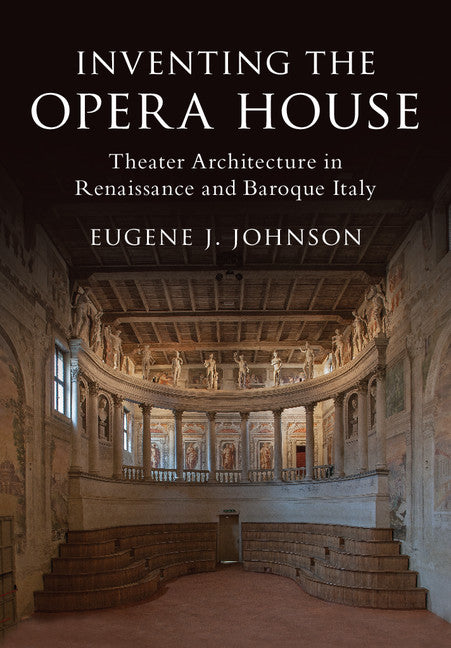Freshly Printed - allow 8 days lead
Couldn't load pickup availability
Inventing the Opera House
Theater Architecture in Renaissance and Baroque Italy
This book examines the invention of the architecture of the modern opera house in Italy between the late fifteenth and late seventeenth centuries.
Eugene J. Johnson (Author)
9781108421744, Cambridge University Press
Hardback, published 17 May 2018
346 pages, 132 b/w illus. 63 colour illus.
26.2 x 18.5 x 2.2 cm, 1.03 kg
'The book is clearly written and profusely illustrated (nearly two hundred images in black-and-white and color). This is clearly the definitive study of Renaissance and early Baroque theaters and should be on the reading lists not only of scholars and students in the fields of theater and architecture but also those of musicologists and historians concerned with the role of culture in early modern Italy.' Jonathan Glixon, Renaissance Quarterly
In this book, Eugene J. Johnson traces the invention of the opera house, a building type of world wide importance. Italy laid the foundation theater buildings in the West, in architectural spaces invented for the commedia dell'arte in the sixteenth century, and theaters built to present the new art form of opera in the seventeenth. Rulers lavished enormous funds on these structures. Often they were among the most expensive artistic undertakings of a given prince. They were part of an upsurge of theatrical invention in the performing arts. At the same time, the productions that took place within the opera house could threaten the social order, to the point where rulers would raze them. Johnson reconstructs the history of the opera house by bringing together evidence from a variety of disciplines, including music, art, theatre, and politics. Writing in an engaging manner, he sets the history of the opera house within its broader early modern social context.
1. Ferrara and Mantua, 1486–1519
2. Rome 1480s–1520
3. Early theaters in Venice and the Veneto
4. Sixteenth-century Florence, with excursions to Venice, Lyon and Siena
5. Early permanent theaters and the commedia dell'arte
6. Theaters in the ancient manner and Andrea Palladio
7. Drama-Tourney theaters
8. Ferrara, Parma, and theaters of Giovanni Battista Aleotti
9. Seventeenth-century theaters in Venice: the invention of the opera house
10. Seventeenth-century theaters for comedy and opera
11. Teatro di Tordinona in Rome, Queen Christina of Sweden, and Carlo Fontana.
Subject Areas: Opera [AVGC9], History of architecture [AMX], Public buildings: civic, commercial, industrial, etc [AMG]


